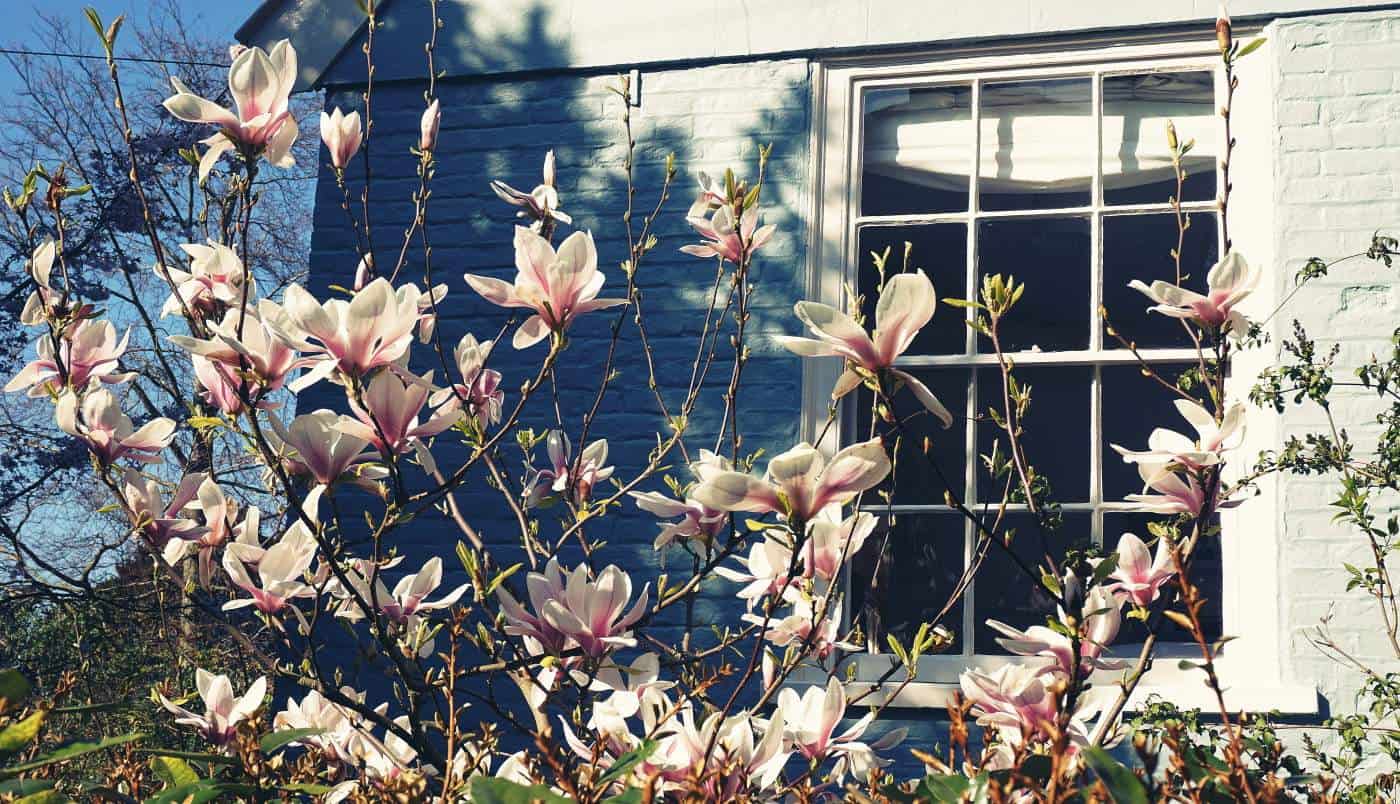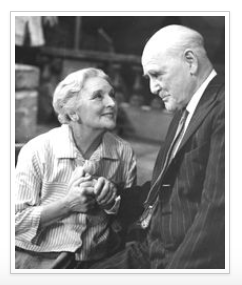The name Sybil Thorndike conjures up a wealth of wonderful images: the classic actress who created the role of Saint Joan for George Bernard Shaw: the Grand Dame of British Theatre who could reputedly sweep into a room and make everyone in the room believe they were the one she’d come to see, and the family woman who lived long enough to know her great-grandchildren.
According to her family Sybil was always a performer, although acting was not her first choice of career. She trained as a classical pianist and only took to the stage when debilitating hand cramps caused by nerves forced her to rethink her future. In 1903 she started to train for the stage along with her brother Russell.
At the tender age of twenty-one Sybil was offered her first professional contract: a tour to America with the actor-manager Ben Greet. Despite some objection from her family she accepted the job. Thus began Sybil Thorndike’s life-long passion with travel, which was to see her criss-crossing the globe to perform well into her retirement years. During her long career she performed in Australia, New Zealand, South Africa, India and both Western and Eastern Europe.
In 1908 Sybil was spotted by the playwright George Bernard Shaw. This lucky coincidence brought Sybil a job understudying the role of Candida in a tour directed by the writer himself. The understudy job was a lucky break for Sybil in more ways than one; apart from bringing her together with the playwright who was to be so instrumental in her future it was during this tour that Sybil was to meet her future husband, Lewis Casson.
Lewis and Sybil were married in 1908. Thus began one of the great theatrical partnerships. Any texts written on Sybil’s life and career find it impossible to talk about her in isolation without at least some reference to her life-long partnership with Lewis, which was to last over sixty years until his death in 1969.
In 1933 George Bernard Shaw saw Sybil in a production of The Cenci. For some time he had wanted to write a play about Joan of Arc, but had been unable to find the right inspiration for the character. Sybil’s performance proved to be the missing piece in the jigsaw and he finally started to write the play, with Sybil firmly in his mind for the lead role.
Sybil, oblivious to Shaw’s plans, had developed her own completely independent interest in St Joan, and had got as far as commissioning her friend Lawrence Bingan to write a play for her. This bizarre duplication of effort was brought to an end when Sybil read about Shaw’s Saint Joan in the paper and he finally got round to telling her that he had been writing the part specifically for her all along.
Sybil later recalled her speechlessness at the first read-through of Saint Joan, when she realised that Shaw had written exactly the play she herself had had in mind. At this time Joan was still portrayed as a sweet country girl with, as Sybil later described it “a holy bob face”. But Shaw had written about “the real Joan, the tough revolutionary” – an angle that held much more interest for the politically active and aware Sybil.
The first production of George Bernard Shaw’s Saint Joan ran for six months in London and made Sybil Thorndike into a household name.
Although Sybil made several films during her career, including The Prince and The Showgirl with Marilyn Monroe, it is for her ceaseless work in the theatre that she is renowned and recognised. Despite being told in her early 20s that she did not have ‘the face’ for tragedy, she became famous for her portrayals of tragic women – Lady Macbeth, Medea, Candida and of course Saint Joan to name but a few.
In September 1969 Sybil gave her name to the new theatre in Leatherhead, Surrey, which became ‘The Thorndike’. Despite being in her eighty-seventh year Sybil performed in the new play ‘There Was An Old Woman’ in the first season at the Thorndike.
Sadly the theatre was recently forced to close, but the legacy of Sybil Thorndike, who died in 1976 aged ninety-three, still lives on in the memoirs she recorded and the inspiration she provided as one of the finest theatre performers of the 20th Century.
Her Life
- Sybil was born on 24th October 1882 in Gainsborough, Lincolnshire to clergyman Arthur Thorndike and his wife Agnes Macdonald (known affectionately as Donnie and later in her life by her many grandchildren as Don Don).
- The eldest of four children Sybil had two brothers, Russell and Frank, and a sister, Eileen.
- Frank was sadly killed in the First World War. The family were devastated, particularly Sybil’s father who never recovered from the shock and himself died only a few months later.
- Sybil married Lewis Casson on December 22nd 1908. They had four children within the space of six years John, Christopher, Mary and Ann.
- During the Second World War their son John was missing presumed killed. From 1940 to 1945 they had no news until, on the declaration of peace, they found out he had been captured and was safe and well. After five years of waiting he was home within a few weeks.
- Sybil and Lewis were involved in the early days of British Equity, The Arts Council, The Old Vic, the National Theatre, Chichester Festival Theatre and, of course, the Thorndike Theatre in Leatherhead.
- Lewis Casson died in May 1969 aged ninety-three. One of Sybil’s greatest regrets was that he was not by her side to witness the opening of the Thorndike Theatre in September of the same year.
- Sybil Thorndike died in London on 9th June 1976 at the same impressive age as her husband had been when he passed away a still sprightly and mentally active ninety-three.
Did You Know?
- Sybil was always superstitious about washing her stage costumes and wouldn’t allow anyone to wash them exclaiming, “it knows exactly what to do and it mustn’t be touched!”
- On her second tour to the United States in 1905 Sybil severely damaged her voice. The problem was eventually cured by her being forbidden from speaking for six long weeks, but voice trouble continued to plague her for the rest of her career.
- Both Sybil and Lewis held strong political beliefs and were active members of the Labour Party, to the extent that when the 1926 General Strike cut the run of Saint Joan short they both remained strongly on the side of the strikers.
- On their trip to South Africa in 1928 Sybil and Lewis were shocked when they realised that segregation meant that the black population were barred from their plays. Not to be daunted, they arranged with the theatre management to segregate the theatre itself, so the blacks could sit in the circle and the whites in the stalls. Although today we would regard this as a far from acceptable situation it was a considerable achievement at the time.
- In her lifetime Sybil received two honorary degrees and was made both a Dame of the Order of the British Empire (in 1931) and then later a Companion of Honour (1970). On the announcement of this second Royal honour she received a telegram from Sir Laurence Olivier declaring “I can’t imagine the Queen having a nicer companion”




























Add Comment